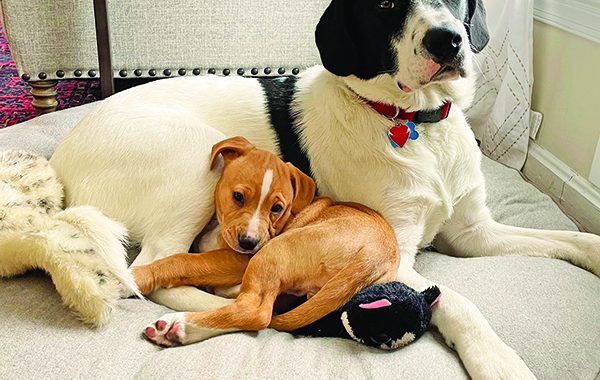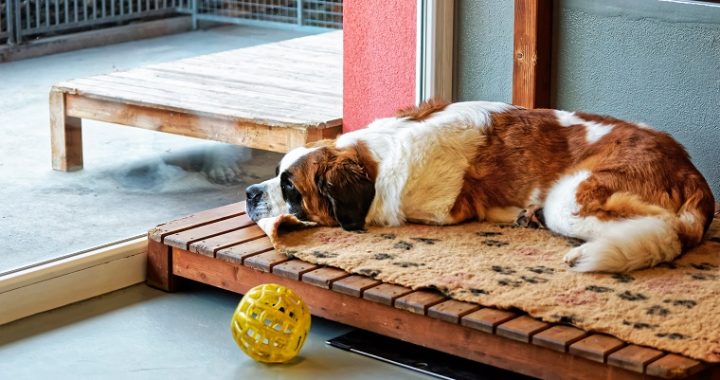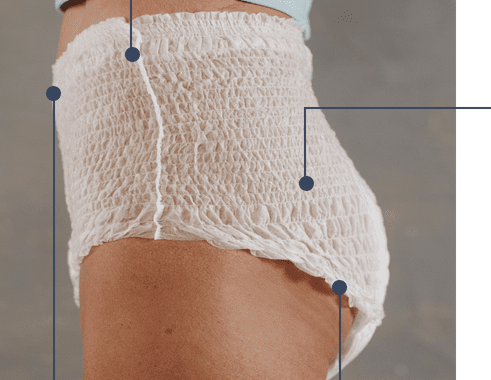Past Basic Dog Training
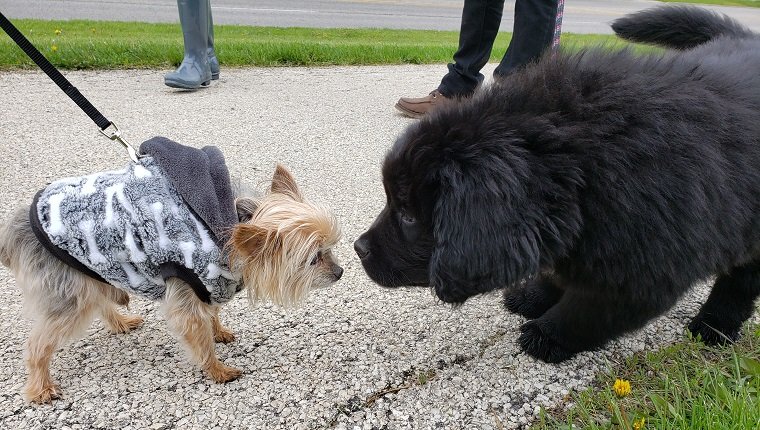
Past Basic Dog Training
Essential great habits preparing (sit, down, come, and so forth) is indispensably imperative to help your canine relative figure out how to get by in a world brimming with people. Notwithstanding, preparing shouldn’t stop there; keep preparing admirably past the fundamentals.
Our second-level class here at Peaceable Paws is classified “Past Good Manners,” and after that our understudies go on to “Super Dog” classes. In these high-level courses, we set essential level abilities, sum them up to all the more genuine applications, and present new preparing difficulties for our canine-human groups to dominate. The expansion of these abilities further develops correspondence and connection among canines and their people reinforces the unwavering quality of the canines’ reactions to signs both at home and openly, and assists them with turning out to be better canine residents.
Here are a portion of our top pick “Past” practices:
* DISTANCE WORK. In essential preparing we by and large train our canines to react to our signals when they are directly before us (aside from “Come” obviously!). Therefore, numerous canines think “Down,” for instance, signifies “Rests at my human’s feet.” If they are across the room and we request that they rest, they come running over and drop to the floor directly before us. In a perfect world, nonetheless, we may need “Down” to signify “Drop to the ground any place you are the point at which I give you the prompt to rests.”

This is shockingly simple to instruct if your canine as of now has a strong “verbal down” – that is if he rests immediately when you give the verbal signal without utilizing a treat, hand signal, or any extra prompts. If not, return to the starting point and work on that! (See “The Allure of the Lure, July 2018.) Here’s the way to show a Distance Down:
- 1. Start with your canine sitting before you. Signal the “Down” (just to heat up), snap or utilize your marker word, and treat.
- 2. With your canine sitting before you, advise her to stand by or stay and make a half-stride back. Sign the “Down,” then, at that point mark, get back to her and convey the treat. On the off chance that whenever during this convention your canine doesn’t rest when you give the sign, get back to where she is sitting and brief, imprint, and treat. On the off chance that she begins to get up to come to you, remind her to stand by or stay.
- 3. Advise her to stand by or stay, make a half-stride back, and without requesting that she “Down,” imprint, return, and treat. On the off chance that you request that she “Down” each time you venture back, she will begin to expect your sign and will be resting before you ask her to. She will think you venturing away is the sign to rests.
- 4. Bit by bit increment distance – a full advance, two stages, three stages, and so forth, making sure to blend incessant reiterations in which you return without requesting that she rests until she will rest on your verbal sign from any distance. Additionally, discharge her from the standby or stay habitually so she doesn’t need to remain in one spot for a really long time a period without breaks!
You can utilize a similar cycle for some other prompts you need your canine to react to form a good way. Start with her before or close to you, request that she stand by or stay, and progressively increment the separation from which you prompt her for the conduct.
*BLIND WORK. We’re not discussing vision-hindered canines here, yet rather about having your canine react to prompts regardless of whether you’re not taking a gander at one another. Once more, you have most likely encouraged your canine to react to your signals when you are confronting one another. In any case, imagine a scenario in which your back is turned, or she is confronting away from you. Imagine a scenario where you are in another room. A very much prepared canine will react to those prompts regardless of whether you’re not visually connecting. Here’s the secret:
- 1. Have your canine sitting before you. Advise her to stand by or stay and turn your back to her. Signal her to “Down.” If she rests, mark, pivot to confront her, and feed her a treat. (Since you can’t check whether she rests, you will either require a partner before you who gestures or shakes their head to advise you if she did or didn’t rest, or you can do it before a mirror so you can check whether she reacted to your signal.) If she doesn’t rest, pivot, prompt once more, then, at that point imprint and treat when she does it.
- 2. Once more, pivot without prompting the down now and again. Similarly as with the Distance Down, blend a few reiterations where you turn your back, mark, pivot, and treat without signaling the down, so she doesn’t come to think turning your back is prompt to rests.
- 3. Rehash Step 1 until she reliably rests on the sign with your back turned. On the off chance that she is by all accounts experiencing difficulty understanding the idea, take a stab at promoting the down from a quarter turn so you are standing sideways to her, and slowly increment the level of the turn throughout numerous reiterations until she can do it dependably with your back turned.
- 4. Presently add distance. Join the Distance Down with the Blind Down for all the more genuine adaptability.
- 5. Find support. At long last, for a far away Blind Down, either utilize a mirror so you can watch your canine, or work with an accomplice who can advise you if she reacts.
Have your canine sit, advise her to pause or remain, and leave the room. Then, at that point prompt her to “Down.” If she does, imprint, return, and treat. If she doesn’t, return, sign once more, imprint, and treat. Then, at that point attempt once more. Make sure to scatter heaps of “not-down” preliminaries for each “Down” that you signal!
Showing a mix of the Blind Down and Distance Down additionally gives you a significant Emergency Down with which you can leave your canine speechless in case she is made a beeline for risk.
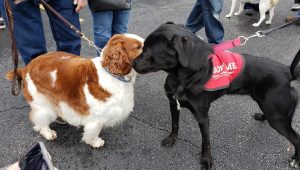
COME PAST DISTRACTIONS.
At the point when you have helped your canine to come to you in non-diverting conditions, it’s an ideal opportunity to raise the stakes. (See “Rocket Recalls,” September 2012.) You can do this by proceeding to rehearse your Run Away (Let’s Party!) review while step by step presenting interruptions.
You can make it shockingly better by presenting the Premack Principle, where your canine discovers that the best approach to get authorization to examine something she needs is to come to you first. The Premack Principle says that you can utilize a higher worth/almost certain conduct to build up a lower esteem/more uncertain conduct. This is additionally called “Grandmother’s Law” – you need to eat your vegetables before you can have your treat.
You can show this casually in regular circumstances. At the point when you are out strolling with your canine on the rope and you can see that she needs to go explore something, periodically (few out of every odd time!) joyfully call her to you, and when she gets to you give a lively, “Alright go!” prompt and run with her to the object of her consideration.
You can likewise show her the Premack idea all the more officially as follows:
- 1. Have a partner remain in the focal point of the room. Advise your canine to stand by or stay and stroll across the room past the individual.
- 2. Happily summon your canine and run from her. At the point when she runs past the aide to get to you, get her rope, say “How about we go see (individual’s name)!” and immediately run with her back to the individual, who then, at that point welcomes the canine with energy.
- 3. Increment the interruptions. As she comprehends that coming to you makes the great stuff available, slowly increment the trouble of interruption – have the aide sit on the floor, lie on the floor, hold treats, put a plate of food on the floor (with a bowl to cover it if necessary).
This very valuable convention trains your canine to come to you to “win” the prize of hurrying to play with another canine, going to visit an individual with treats, sniffing an enticing pee spot, or pursuing a squirrel.
TARGETING TO OBJECTS.
In fundamental preparation, we train our canines to contact their nose to our hand in conduct known as “focusing on.” If your canine loves the “contact” conduct, you can utilize the hand-focus as an option in contrast to your review prompt, as she should come to you to focus to (contact) your hand.



